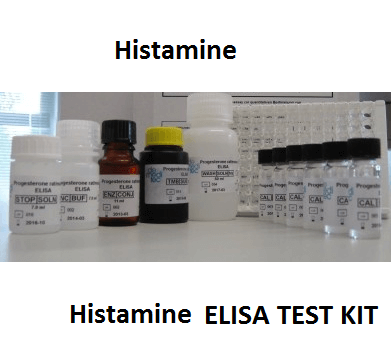PROPERTIES
PRODUCT DESCRIPTION
Fish meal that has been produced from materials which has been allowed to degrade prior to being processed can contain high levels of histamine and can be toxic. Elevated histamine levels (1,000 ppm) can cause gizzard erosion and black vomit in poultry. Histamine testing in fresh fish is a possible control strategy that can be used by seafood processors in their HACCP program to address the hazard of scombrotoxin formation. Histamine is a product of decomposition of histidine caused by the growth of certain bacteria in seafood. The amount of the amine that forms is a function of bacterial species, the temperature and time of exposure, and may exceed 1,000 ppm (mg/kg). Fish containing high levels of histamine has been associated with many examples of poisoning commonly referred to as “scombroid poisoning,” a major health problem for consumers. Scombrotoxic fish usually contains levels of histamine in excess of 200 ppm but such fish may be randomly dispersed within a lot. For large fish, histamine is found at variable levels even within individual fish. Quality control measures designed to minimize the occurrence of scombrotoxic fish require the determination of histamine levels in the range of approximately 10 to 200 ppm. Good quality fish contain less than 10 ppm histamine, a level of 30 ppm indicates significant deterioration, and 50 ppm is considered to be evidence of definite decomposition. The defect action level (DAL), the level at which regulatory actions are taken for histamine is 50 ppm.
The assay kit provides materials for the quantitative determination of derivatized histamine in food extracts. The derivatization is part of the preparation of the samples. By use of the acylation reagent, histamine is quantitatively derivatized into N-acylhistamine. The competitive Histamine ELISA kit uses the microtiter plate format. Histamine is bound to the solid phase of the microtiter plate. Acylated histamine and solid phase bound histamine compete for a fixed number of antiserum binding sites. When the system is in equilibrium, free antigen and free antigen-antiserum complexes are removed by washing. The antibody bound to the solid phase histamine is detected by anti-goat/peroxidase. The substrate TMB/peroxidase reaction is monitored at 450 nm. The amount of antibody bound to the solid phase histamine is inversely proportional to the histamine concentration of the sample.
TECHNICAL SPECIFICATIONS
|
Technology |
: ELISA |
|
Kit size |
: 96 wells |
|
Sample material |
: fresh fish, sausage, milk, wine, fish meal, champagne |
|
Sample preparation |
: acylation |
|
Sample volume |
: 25 µl |
|
Standard range |
: 0.5 – 50 ng/ml |
|
Incubation |
: 30, 10, 15 min (RT/shaker) |
|
Measuring system |
: TMB 450 nm |
|
Sensitivity |
: 0.15 mg/l |



